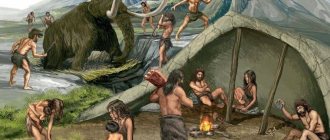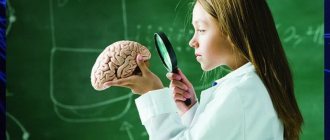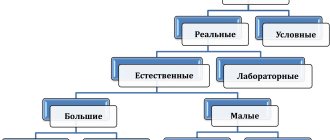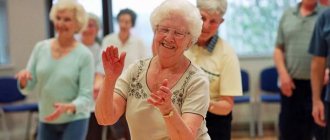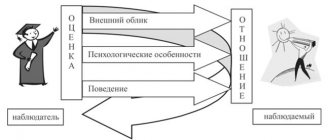Introduction
Any person, based on his own experience, realizes that he is somehow capable of perceiving and cognizing the world around him, various objects and phenomena.
The normal state of a person, unless he is sleeping, is an active, active state. While he is alive, he is constantly acting, doing something, being busy with something - working, studying, playing sports, communicating with people, reading, etc. In a word, he shows activity - external (movements, operations, muscle efforts) or internal (mental activity that can be observed even in a motionless person when he thinks, reads, remembers, etc.).
Activity is a person’s activity aimed at achieving consciously set goals related to meeting his needs and interests, and fulfilling the requirements of society and the state.
Without activity, human life is impossible. In the process of activity, a person learns about the world around him. Activity creates the material conditions of human life, without which he cannot exist - food, clothing, housing. In the process of activity, spiritual products are created: science, literature, music, painting; The world around us changes and transforms: deserts become blooming gardens, rivers change their course and direction, cities arise in the tundra and taiga. Human activity shapes and changes the person himself, his will, character, and abilities.
https://youtu.be/nyYtWEC2teA
Practical conclusions
1. Learn to set specific goals for yourself and determine the optimal means to achieve them. This gives the activity a conscious character, allows you to control its progress and make, if necessary, certain adjustments.
2. Remember: it is important to see not only the immediate, but also the distant goals of your activities. This will help you overcome difficulties and will not allow you to stop halfway without achieving your goal.
3. Show concern for the diversity of your activities. This will provide the opportunity to satisfy different needs and develop different interests.
4. Do not forget about the importance of internal activities in people's lives. This will help you be attentive to the opinions, emotions, and feelings of others, and show sensitivity in your relationships with other people.
Concept of human activity
Definition of activity. Activity can be defined as a specific type of human activity aimed at knowledge and creative transformation of the surrounding world, including oneself and the conditions of one’s existence. In activity, a person creates objects of material and spiritual culture, transforms his abilities, preserves and improves nature, builds society, creates something that would not exist in nature without his activity. The creative nature of human activity is manifested in the fact that, thanks to it, he goes beyond his natural limitations, i.e. exceeds its genotypically determined capabilities. Thanks to the productive, creative nature of his activity, man has created sign systems, tools for influencing himself and nature. With their help, he built modern society, cities, cars; with their help he produced new objects of consumption, material and spiritual culture and, ultimately, transformed himself. The historical progress that has taken place over the past few tens of thousands of years owes its origin to activity, and not to the improvement of human biological nature.
Modern man lives surrounded by such objects, none of which are pure creations of nature.
All such objects, especially in production and in everyday life, have been touched in one way or another by human hands and minds, so that they can be considered the material embodiment of human abilities. They seem to embody the achievements of the human mind. Mastering ways of handling such objects and including them in activities serves a person’s own development.
Activities are always purposeful, active, aimed at creating a product.
Human activity has the following main characteristics: motive, goal, subject, structure and means. The motive of an activity is what motivates it, for the sake of which it is carried out. The motive is usually a specific need that is satisfied in the course and with the help of this activity.
The product of the activity acts as the goal of the activity. This can be a real physical object created by a person, certain knowledge, skills and abilities acquired in the process of activity, a creative result (idea, plan, theory, work of art).
The subject of an activity is what it directly deals with. For example, the subject of cognitive activity is all types of information, the subject of educational activity is knowledge, abilities and skills, and the subject of labor activity is the created material product.
Levels of need
(
)
A human need is a specific need that an individual satisfies in the course of conscious activity. All needs can be divided into those dictated by physiological and psychological goals, as well as those formed by society.
Hierarchy of levels of needs according to A. Maslow:
- Physiological - based on desires necessary for human survival. These include: thirst, hunger, reproduction. Otherwise they are called natural needs, that is, based on human nature.
- Existential – the need for safety, comfortable living conditions, stability and order.
- Human social needs are dictated by society and are based on the desire to have affection, communicate, and participate in joint activities with others.
- Prestigious - based on the need for recognition, respect from others and self-esteem.
- Human spiritual needs are the desire for self-realization and potential.
The indicated levels of needs according to Maslow are universal.
The basis of human natural needs is interest; it represents a state of motivation that stimulates the beginning of vigorous activity. Interests are usually divided into individual and group. When clarifying whether we need all the needs, we note that they are being implemented consistently. Speaking about what social needs are, this is a secondary interest of the individual if physiological desires are satisfied.
Activity structure.
Any activity has a certain structure. It usually identifies actions and operations as the main components of activity. An action is a part of an activity that has a completely independent, human-recognized goal. An operation is a way of performing an action.
Means of activity are the tools that a person uses to perform certain actions and operations.
Any human activity has external and internal components. Internal include anatomical and physiological structures and processes involved in the control of activity by the central nervous system, as well as psychological processes and states included in the regulation of activity. External components include various movements associated with the practical implementation of activities.
The ratio of internal and external components of activity is not constant. As activities develop and transform, there is a systematic transition from external components to internal ones. This is accompanied by their internalization and automation. If any difficulties arise in the activity or its restoration is associated with violations of the internal components, a reverse transition occurs - exteriorization: the reduced, automated components of the activity unfold, appear outward, and the internal ones again become external, consciously controlled.
The motivation of activity in the process of its development does not remain unchanged. So, for example, in work or creative activity, over time, other motives may appear, and the previous motives recede into the background. Sometimes an activity that was previously included in the structure of an activity can separate from it and acquire an independent status, turning into an activity with its own motive. In this case, we state the fact of the birth of a new activity.
With age, a person's motivation for activity changes. If a person changes as a person, then the motives of his activities are transformed. The progressive development of man is characterized by the movement of motives towards their increasing spiritualization (from organic to material, from material to social, from social to creative, from creative to moral).
Activity and mental processes. Mental processes: perception, attention, imagination, memory, thinking, speech - act as the most important components of any human activity. Human activity is impossible without the participation of mental processes, since they serve as its integral internal moments.
Perception in the process of practical activity acquires its most important human qualities. In activity, its main types are formed: perception of depth, direction and speed of movement, time and space.
Imagination is also associated with activity. Firstly, a person is not able to imagine or imagine something that has never appeared in experience, was not an element, object, condition or moment of any activity. The texture of imagination is a reflection, although not literal, of the experience of practical activity.
This applies even more to memory. Memorization is carried out in activity and itself represents a special type of mnemonic activity, containing actions and operations aimed at preparing material for better memorization.
Thinking in a number of its forms is identical to practical activity. In its more developed forms - figurative and logical - the aspect of activity manifests itself in it in the form of internal, mental actions and operations.
Speech is also a special type of activity, and the phrase “speech activity” is often used to characterize it. Therefore, every activity is a combination of internal and external, mental and behavioral actions and operations.
Types and development of human activity
Types of human activity. Human activity is diverse, but at the same time it can be reduced to “two main types: educational, labor and play. Sometimes sports activities are distinguished, as well as communication as a special type of activity.
Communication is the first type of activity that arises in the process of individual development of a person, followed by play, learning and work.
Communication is considered as an activity aimed at the exchange of information between communicating people. In direct communication, people are in direct contact with each other, know and see each other, directly exchange verbal or nonverbal information, without using any auxiliary means.
A game is an activity that does not lead to the production of any material or ideal product (with the exception of business and project games for adults and children).
There are several types of games. Individual games are a type of activity where one person plays a game; group games involve several people. Object games are associated with the inclusion of an object in a person’s play activity. Story games unfold according to a certain scenario, reproducing it in basic detail. Role-playing games allow human behavior limited to a specific role that he takes on in the game. Finally, games with rules are governed by a certain system of rules of conduct for their participants. Often in life there are mixed types of games: subject-role-playing, plot-role-playing, plot-based games with rules, etc.
Education is a type of activity whose purpose is the acquisition of knowledge, skills and abilities by a person. Training can be organized and carried out in special educational institutions. It can be unorganized and occur in parallel, in other activities as a by-product, additional result. For adults, learning can take on the character of self-education. The specificity of educational activity is that it directly serves as a means of psychological development of the individual.
Labor occupies a special place in the system of human activity. It was thanks to labor that man built a modern society, created objects of material and spiritual culture, and transformed the conditions of his life in such a way that he discovered prospects for further, almost unlimited, development.
A person of almost any age is characterized by all three types of activity, but at different periods of life they have different meanings. Before school, a child’s main activity is play, although in kindergarten he also studies and works a little independently. The main activity of a schoolchild is study, but work also occupies a prominent place in his life, and in his free time he willingly plays. For an adult, the main activity is work, but in the evenings he can study (on his own or at an evening school, at an evening faculty), and he can devote his free time to games (sports, intellectual).
Activities can be divided into material and spiritual. The first is aimed at changing nature and society. Spiritual activity is associated with the transformation of people's consciousness. Psychologists have always attached great importance to these types of activities in the history of mankind and in justifying their own social ideal
Tasks
1. In Kamchatka, famous for its active volcanoes, special technologies for processing volcanic raw materials are being introduced. This work began with a special decision of the governor. Experts have determined that the production of silicates from volcanic rock is a very profitable business that does not require significant investment. According to their calculations, the work of one plant can bring 40 million rubles to the regional budget and 50 million rubles to the state budget. Consider this information from the perspective of the topic studied: determine what types of human activity were manifested in the events described, name the subjects and objects of activity in each case, and trace the connection between consciousness and activity in this example.
2. Determine whether practical or spiritual activity includes: a) cognitive activity; b) social reforms; c) production of essential goods.
3. Name the actions that make up the activities of a doctor, farmer, scientist.
4. A. N. Leontyev wrote: “Activity is richer, truer than the consciousness that precedes it.” Explain this idea.
Development of human activity.
When we talk about the development of human activity, we mean the following aspects of the progressive transformation of activity:
- Phylogenetic development of the system of human activity.
- The inclusion of a person in various types of activities during his individual development (ontogenesis).
- changes that occur within individual activities as they develop.
- Differentiation of activities, during which some types of activities give rise to others by isolating and transforming individual actions into independent types of activities. The phylogenetic transformation of the system of human activities essentially coincides with the history of the socio-economic development of mankind.
In the process of development of activity, internal transformations occur. Firstly, the activity is enriched with new subject content. Secondly, activity acquires new means of implementation that speed up its progress and improve results. Thirdly, in the process of development of activity, automation of individual operations and other components of activity occurs, they turn into skills and abilities. Finally, fourthly, as a result of the development of activity, new types of activity can become isolated and independently develop.


